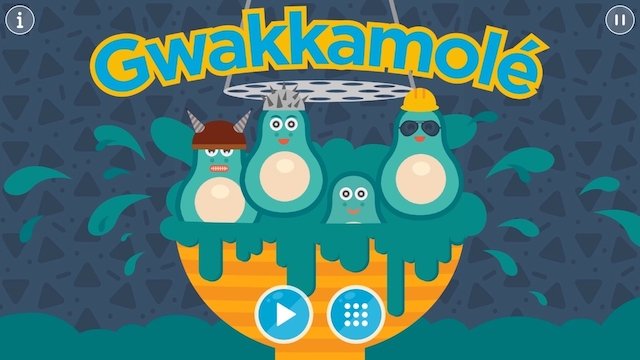
In a new study, researchers reported that three new digital games can help people improve their cognitive skills.
They designed and developed the games—available online and in the iOS and Google Play app stores—to help users’ brains work more efficiently.
While some games falsely claim to improve cognitive skills, these three games have actually proven to help users boost memory, inhibition, and cognitive flexibility.
The research was conducted by a team at New York University and elsewhere.
The team developed the games as a result of a four-year research project.
The goal of the research was to design targeted computer games that improve cognitive skills—specifically, executive functions like memory and inhibitory control.
Upon discovering that the games successfully improved executive functions after as little play as two hours, the scholars wanted to make them available to the general public for free.
The researchers developed three online games: “Gwakkamolé,” “CrushStations,” and “All You Can ET.” Each of these brain training games supports a different executive function.
GWAKKAMOLÉ
The researchers designed the first game, “Gwakkamolé,” to train inhibitory control, a subskill of executive functions. Inhibitory control is the ability to control attention, behavior, thoughts, and/or emotions.
In the game, players are instructed to smash the avocados that pop up on the screen while avoiding any of the avocados wearing hats—some of the avocados in the game have spikey hats, hard hats, or electric hats on top of their “heads.”
As a player gets to higher levels in the game, more avocados appear on the screen and the speed in which players must smash them increases.
Each time a player smashes a hatless avocado they gain points, and adversely, they lose points when they smash an avocado wearing a hat.
“Gwakkamolé” forces players to focus their attention and respond quickly and deliberately (by smashing hatless avocados) to gain points.
CRUSHSTATIONS
“CrushStations,” which involves crustaceans rather than avocados, focuses on training working memory.
Working memory is responsible for temporarily holding and processing information. It plays a major role in how humans use and remember information they learn on a daily basis.
To help train working memory, “CrushStations”—which takes place in the ocean—requires each player to remember the color and type of creatures on the screen to free them from a hungry octopus.
If a player accurately remembers the color and type of crustacean in front of the octopus, the animal goes free. However, if a player is unable to remember both the color and type of creature, the crustacean is captured and eaten by the octopus.
The game increases in difficulty by giving players more creatures to remember and more difficult sequences to process.
ALL YOU CAN ET
The third game is called “All You Can ET.” The researchers designed this game to train cognitive flexibility—the mental ability to switch between thinking about two different concepts and to think about multiple concepts simultaneously.
In this game, players are providing aliens with food and drinks to help them survive.
The challenge in this game is that the aliens frequently change their minds about whether they would like to eat or drink, depending on how many eyes they have and what color their bodies are.
For example, in one round, two-eyed orange aliens only eat cupcakes while one-eye green aliens only drink milkshakes.
As the game increases in difficulty, the rules for what each alien prefers to eat or drink changes.
WHAT THE RESEARCH SHOWS
In addition to developing the games, the researchers published a series of articles reporting on the effectiveness of these games.
They found replicated evidence across multiple experiments that playing our games for two hours causes improvements in executive function skills as compared to a control group that plays an unrelated game.
As the next steps, the researchers plan to continue research and build out virtual reality versions of the games. Together, they have also already edited a handbook of game-based learning.
The handbook, published by MIT Press, will be available on February 4th and includes the results from this research as well as a myriad of other studies on games and learning.
The lead author of the study is Jan L. Plass, a professor of digital media and learning sciences at the Steinhardt School of Culture Education and Human Development at New York University.
The study is published in Learning and Instruction.



